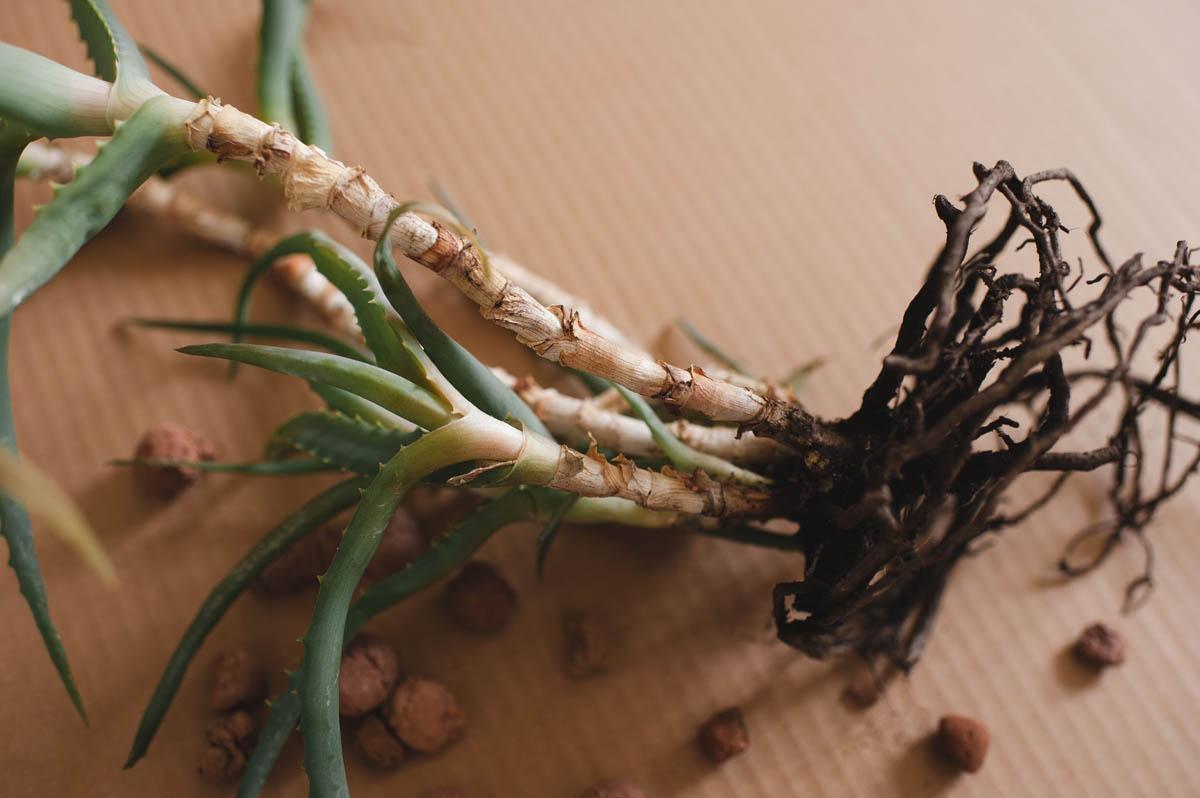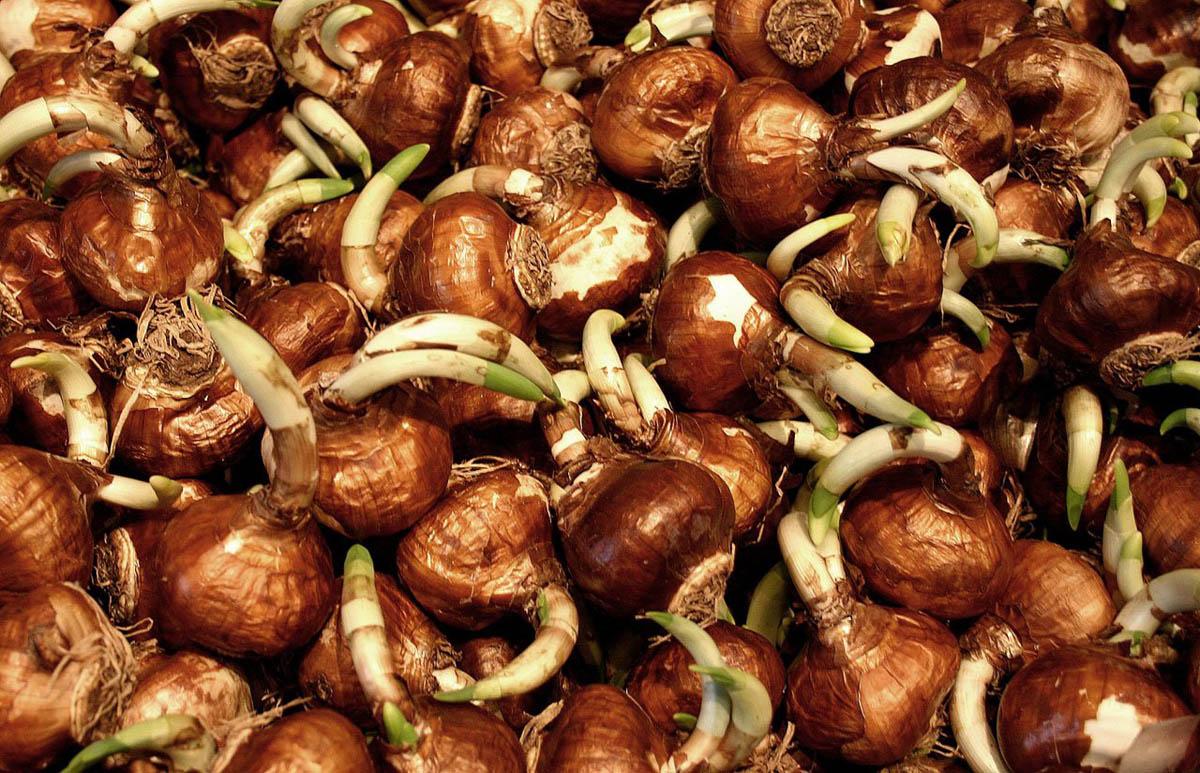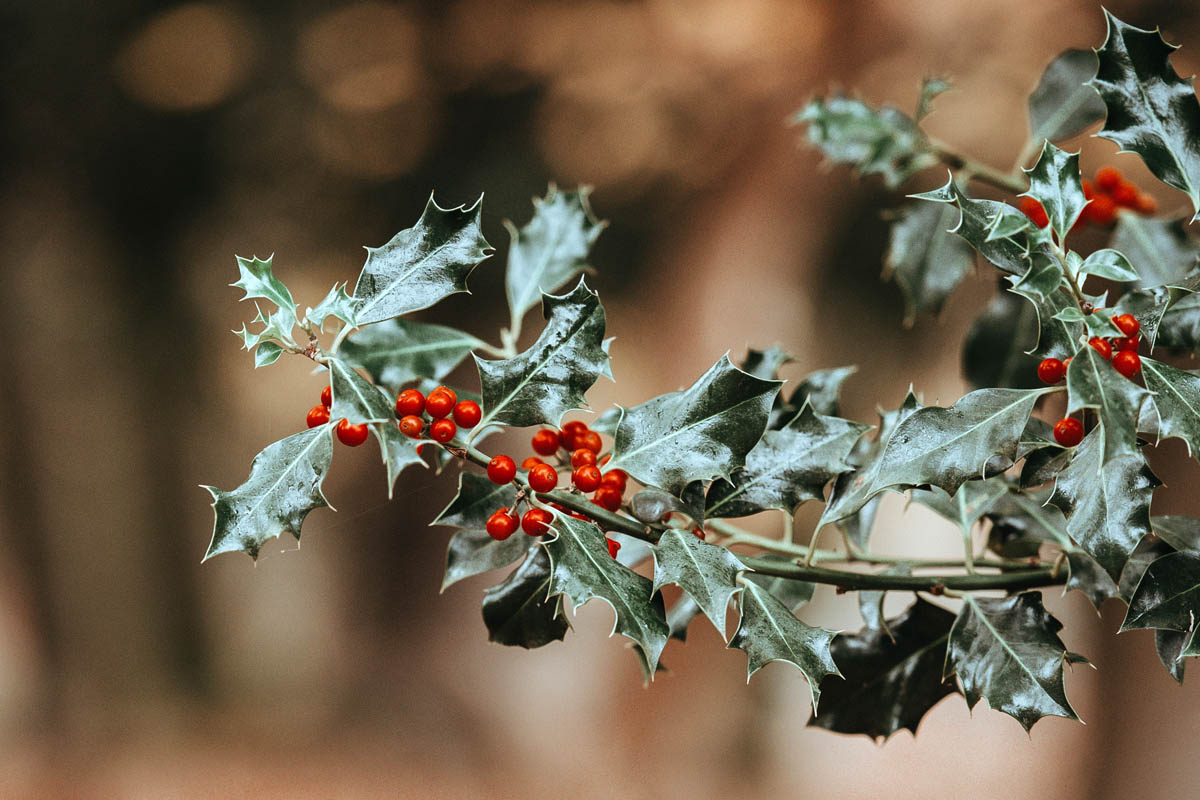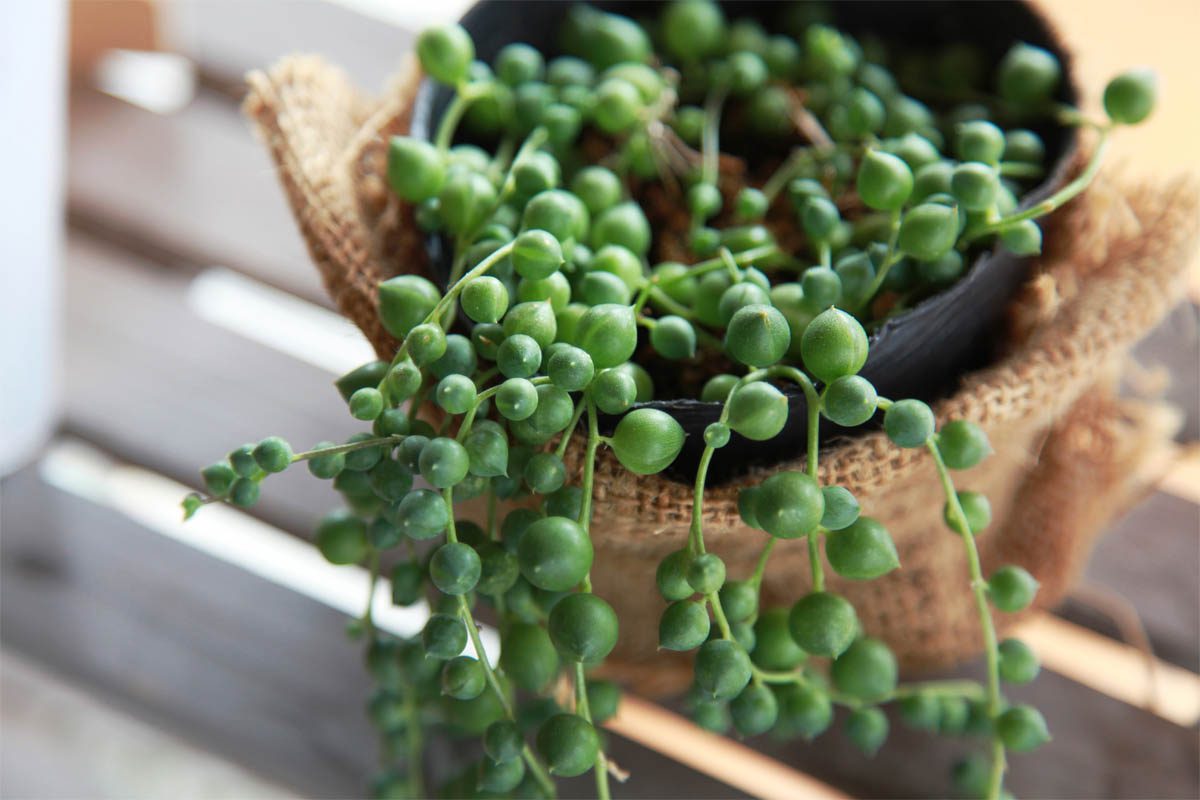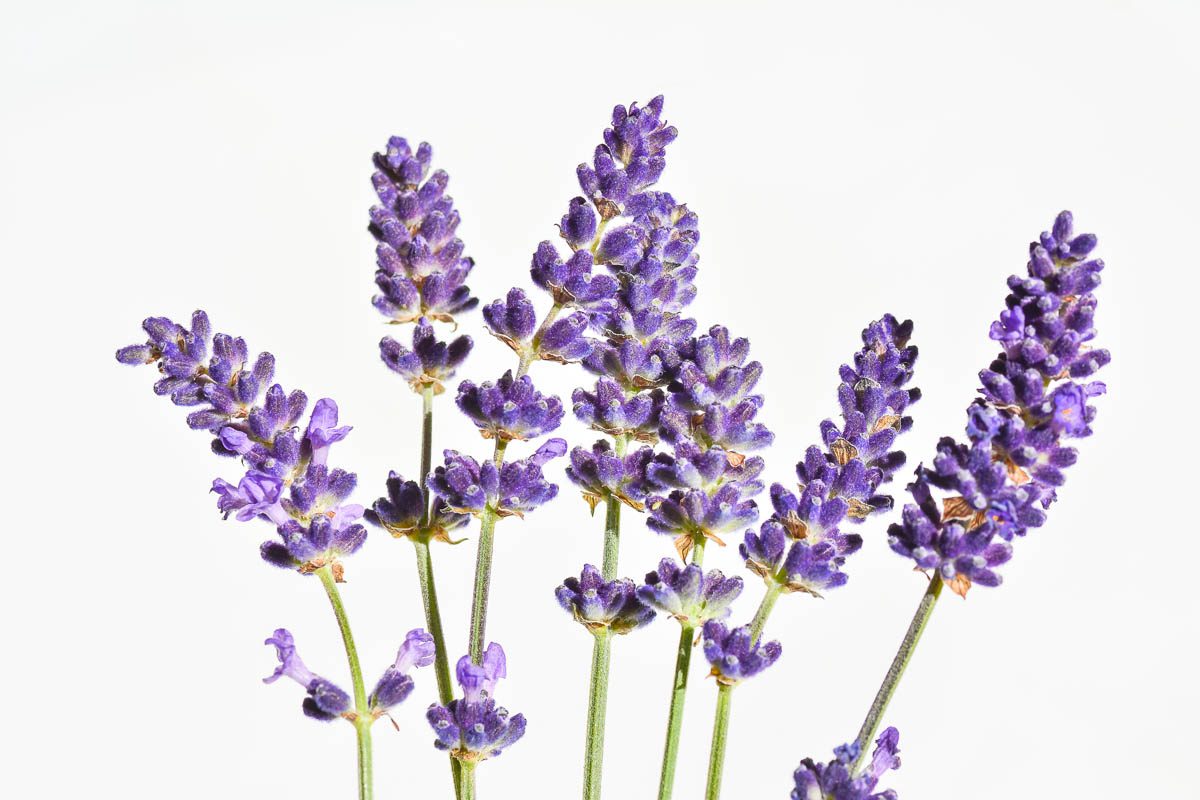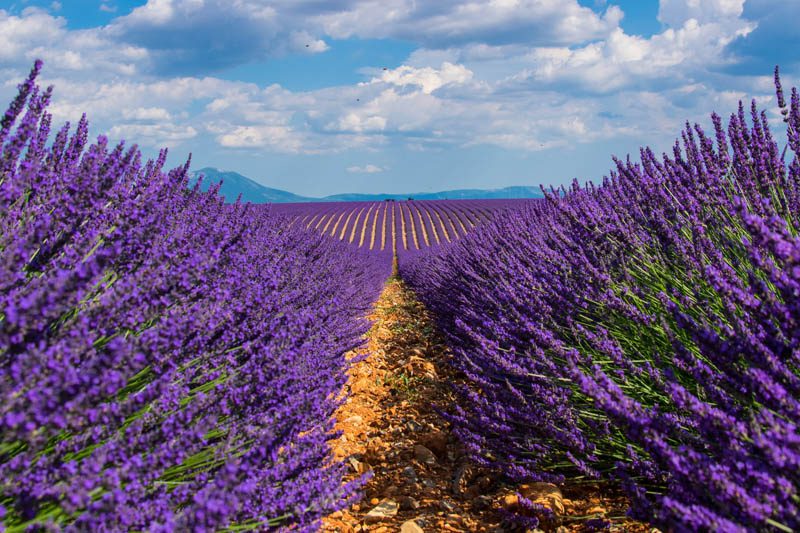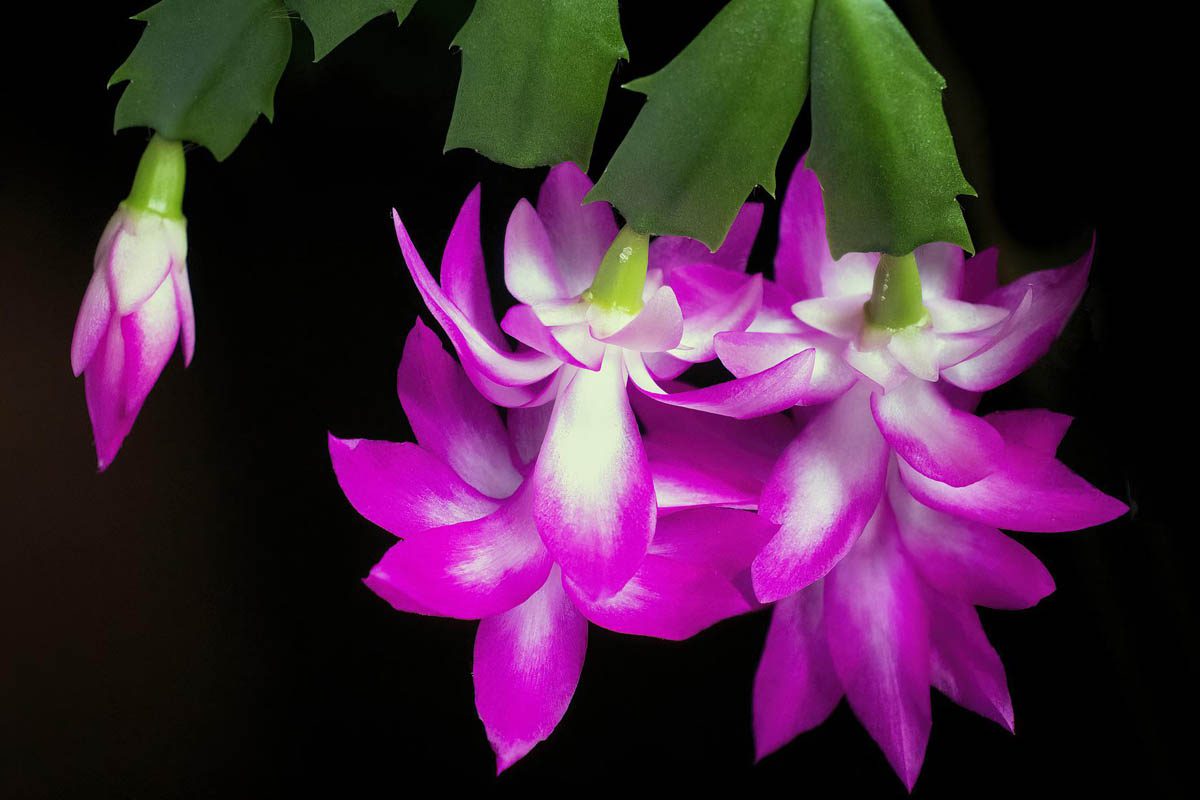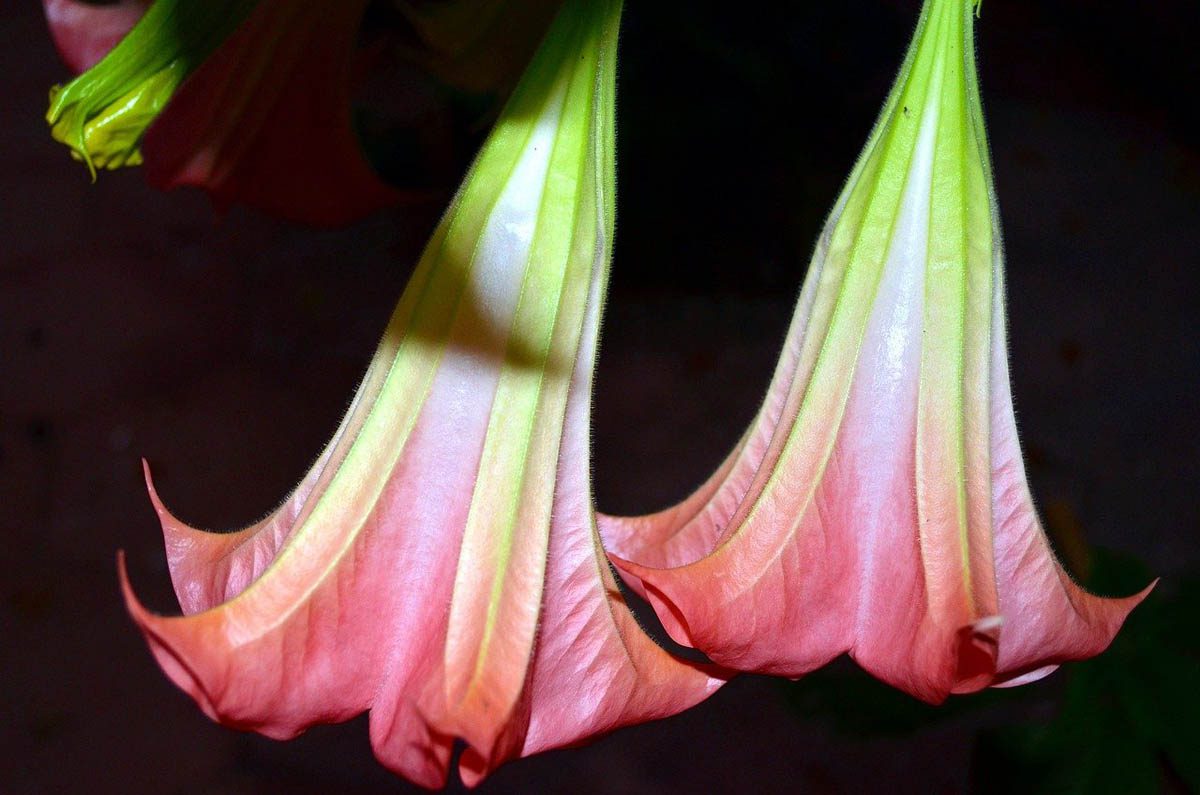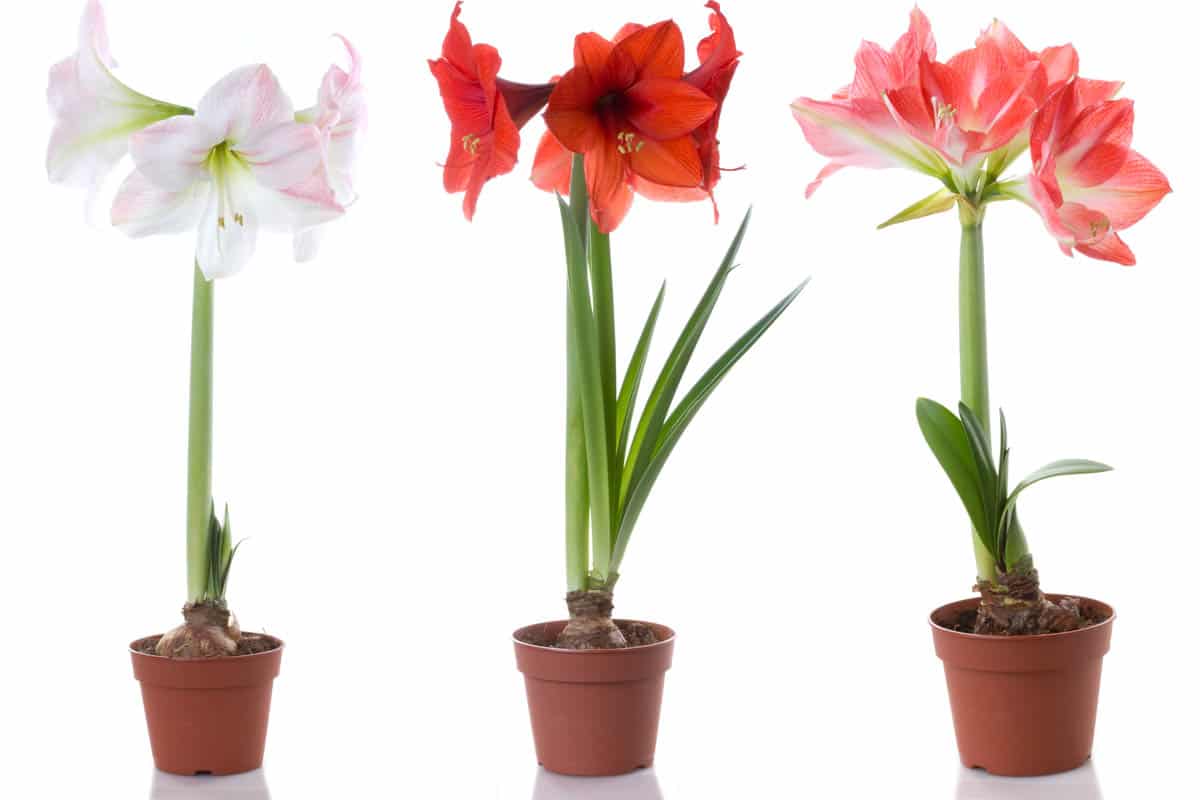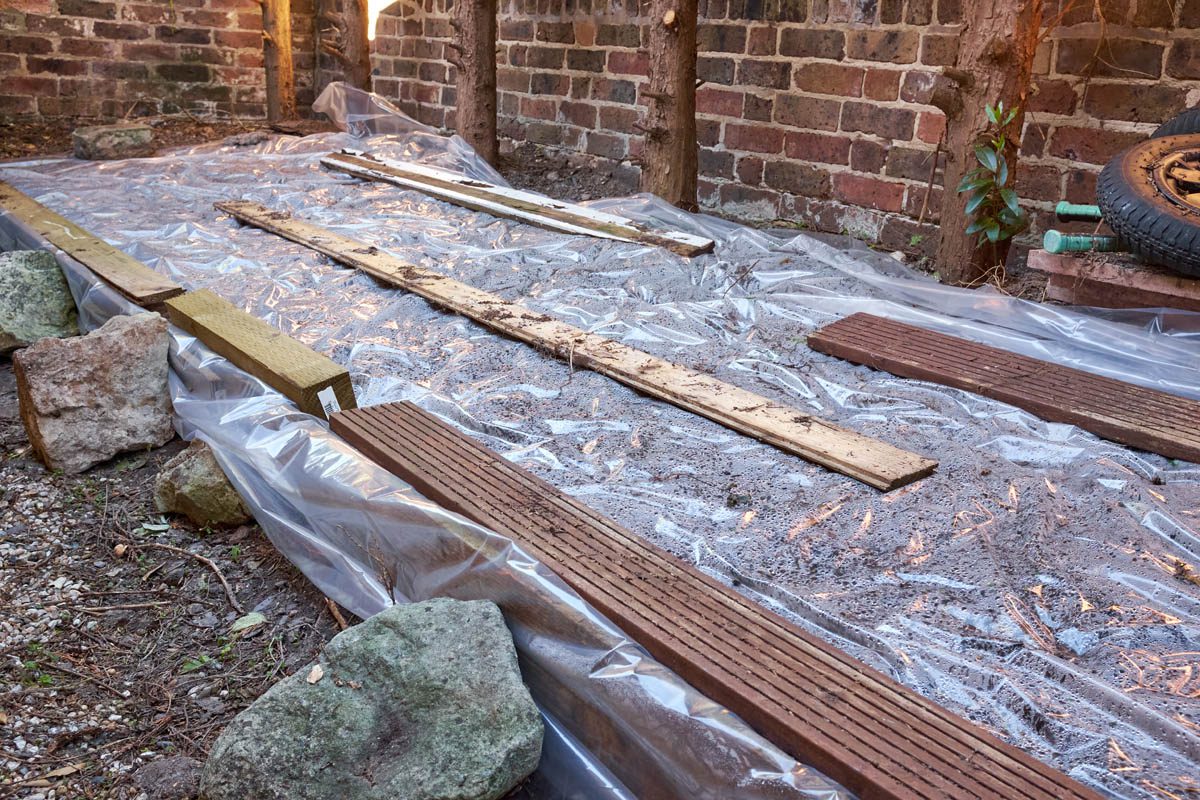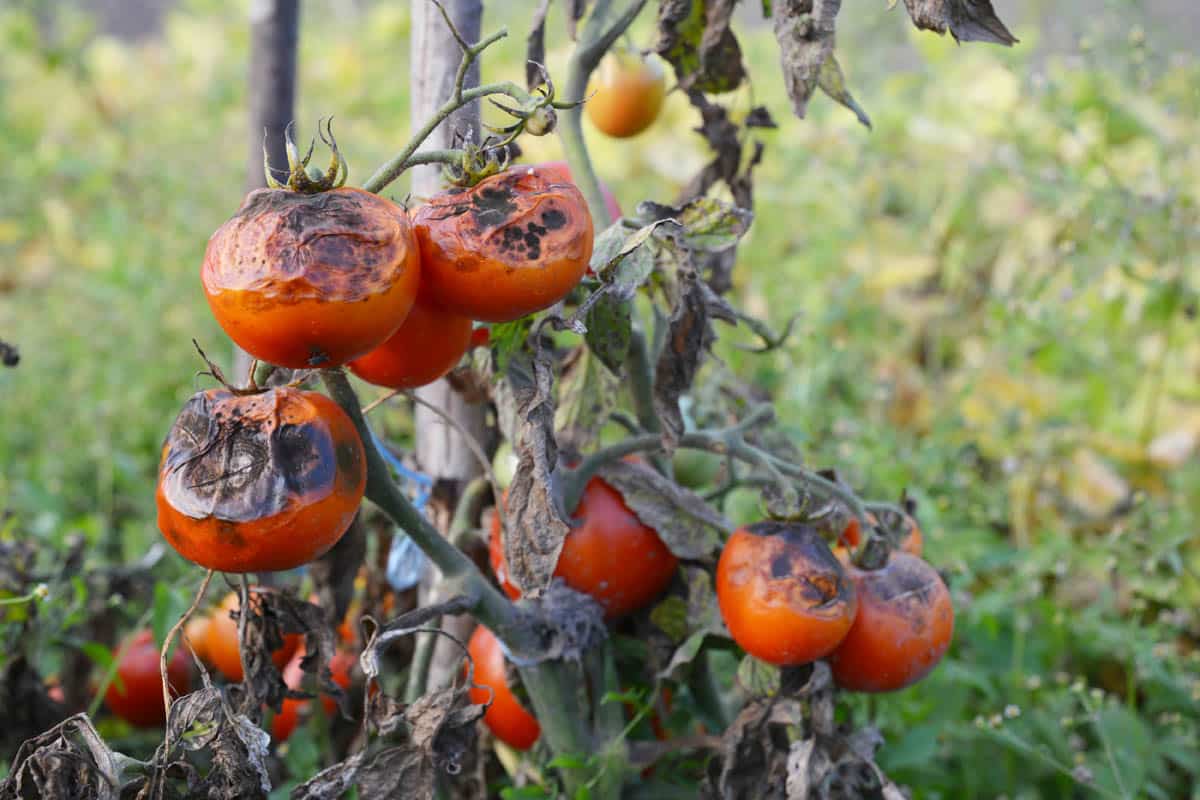What are plant bulbs? Ι What are the five types of bulbs? Ι What is the purpose of bulbs? Ι Can you grow bulbs in pots? Ι How deep should bulbs be planted?
Key points
- Plant bulbs are storage organs that allow plants to store nutrients and energy during unfavourable conditions. They are composed of modified leaves and are usually spherical or oblong in shape.
- Bulbs are a type of geophyte, which means they are plants that have an underground structure that allows them to survive periods of dormancy and unfavourable conditions.
- There are five types of bulbs; true bulbs, corms, rhizomes, tubers and tuberous roots.
What are plant bulbs?
Plant bulbs are a perennating organ made up of a modified stem and/or leaves. A perrenating organ is a specialised plant structure adapted to store energy in the form of carbohydrates, and water, allowing the plant to survive from one germination season to the next. These food reserves sustain the plant through a period of dormancy and re-emergence. When environmental conditions are right, the bud within the centre of the bulb emerges.
Several types of storage units exist in the plant kingdom which includes true bulbs, tubers, rhizomes, corms, and tuberous roots. All bulbs are adapted to survive periods of dormancy during unfavourable growing conditions. At these times, the bulbs’ energy-storage organs sustain the plant through a period of dormancy and re-emergence. When environmental conditions are right, the bud within the centre of the bulb emerges.
Storage organs can be either bulbs, corms, rhizomes or tubers. Bulbs are more common in temperate regions and among monocotyledons (plants with one seed leaf), while rhizomes and tubers occur more often in tropical regions and among dicotyledons (plants with two seed leaves). The main difference between bulbs, rhizomes and tubers is how they are organised internally.
Most plant bulbs are perennial, which means they come back every year. However, growers in warmer climates will need to chill certain bulbs native to cool areas (hardy bulbs) such as hyacinths, to trigger the development of the flower bud within the bulb. The chilling period is approximately 12 weeks to mimic the winter season.
What are the five types of bulbs?

True bulbs
These are bulbs with a short stem with a growth point that is enclosed in a thick, swollen leaf base (known as scale leaf). True bulbs fall into two groups, tunicate bulbs and imbricate bulbs. Tunic bulbs such as the onion or daffodil contain a papery ‘tunic’ outer layer to protect the delicate scales, while imbricate bulbs such as the lily do not have the tunic and therefore must stay moist prior to planting out to prevent damage to the scale leaves.
- Basal plate: The compact, modified stem from which the root and flowering stem and new buds grow)
- Scale leaves: Primary storage tissue and modified leaves
- Tunic: The thin skin-like covering that protects the fleshy scales
- Shoot: Consists of developing flower and leaf buds)
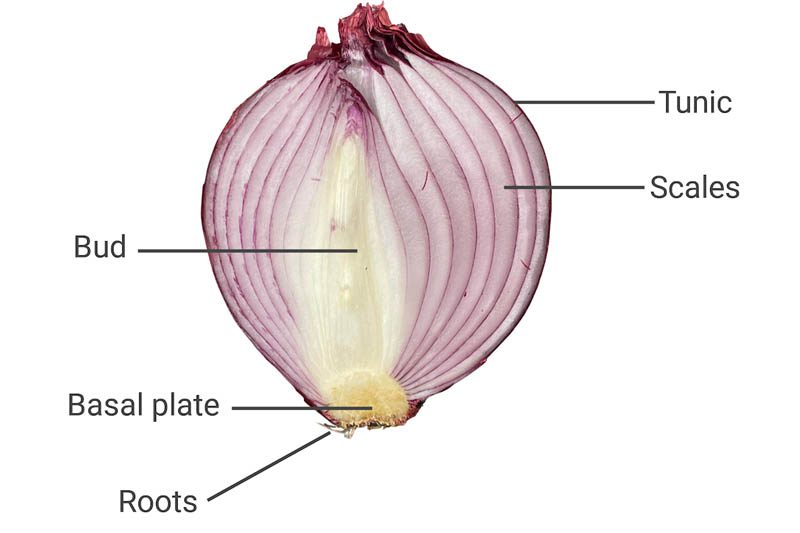
Common types of true bulbs include the Dutch iris, daffodil, tulip, hyacinth, grape hyacinth, snowdrop, amaryllis, garlic and alliums.
Bulbs are categorised according to their hardiness.
- Hardy bulbs such as snowdrops, crocuses, grape hyacinths, tulips and daffodils are able to withstand cold winters. In fact, some hardy bulbs need a cold period to break dormancy, which is why some bulbs are placed in a refrigerator prior to planting out. Hardy bulbs contain antifreeze to prevent the formation of ice crystals within the bulb during sub-zero temperatures. These types of bulbs are some of the earliest flowering plants in spring. The tips of snowdrop leaves have a hardened tip to break through frozen soil¹.
- Semi-hardy bulbs can tolerate some cold but require some protection.
- Tender bulbs cannot tolerate freezing and must be lifted in cold climates.
Tubers
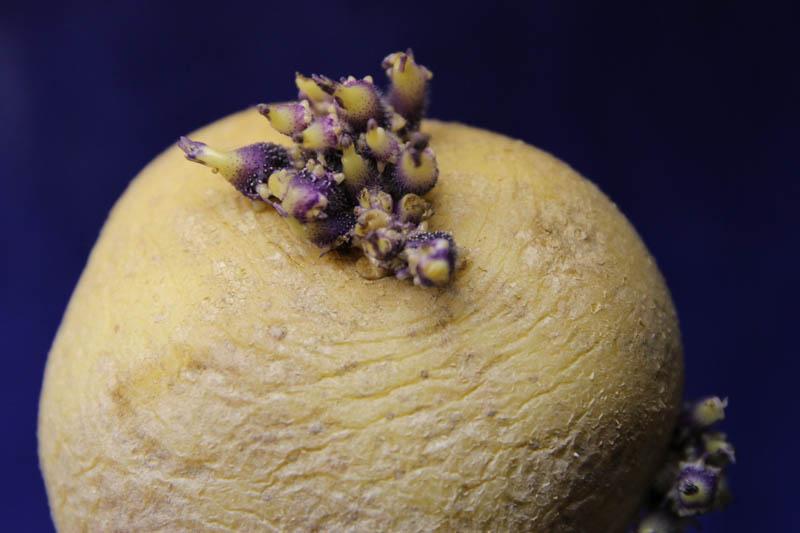
Tubers are thickened modified plant stems or roots, used as storage organs. Unlike the true bulb, tubers are made up of starch-storing parenchyma tissue and do not contain the basal plant within. The rhizome contains eyes that eventually produce shoots above ground and underground roots. Potatoes, cyclamen, dahlia, and caladium are all tuberous plants.
Rhizomes
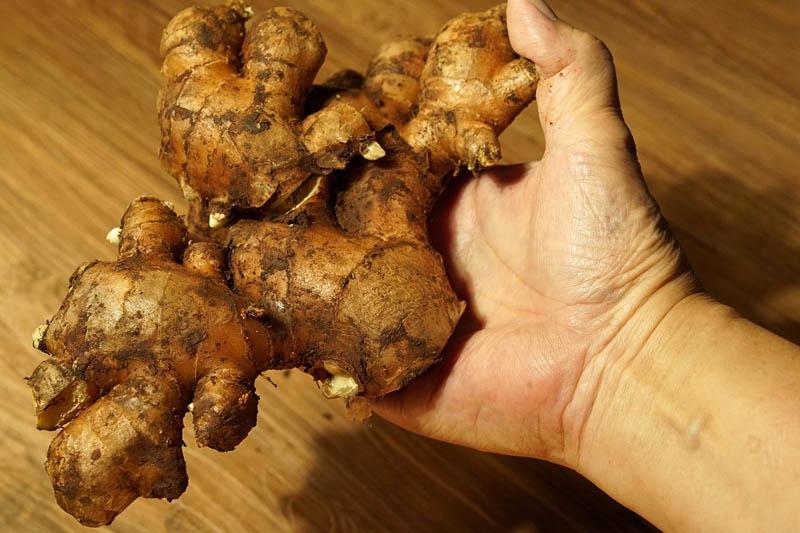
Also known as a creeping rootstalk, rhizomes are underground horizontal plant stems that grow just below the surface of the soil. Rhizomes contain the same internal and external structures as stems. Growth points known as nodes are present along the rhizome which are growth points that develop into leaves and flower stems. Common rhizomatous plants include the bearded iris, ginger, turmeric, canna lilies, snake plant and bamboo.
Corms
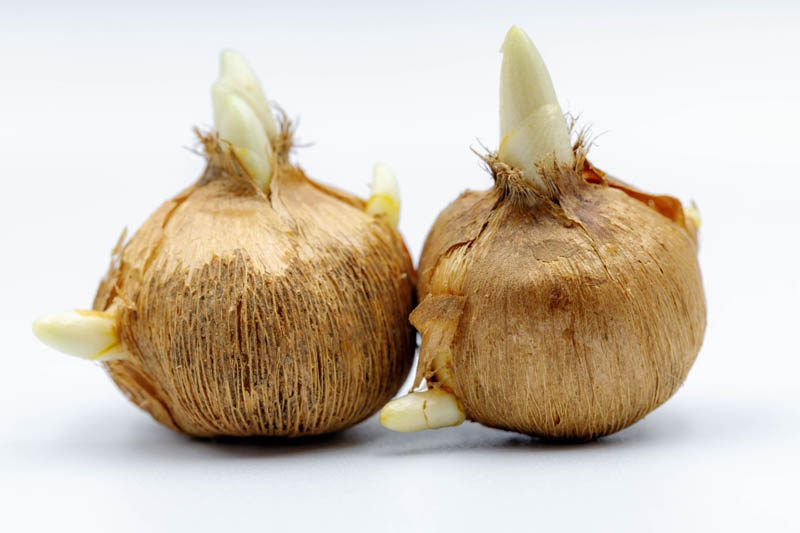
Corms are swollen stem bases that act as organs for nutrients. They are similar to bulbs but lack fleshy layers. Corms have a single vascular bundle (the bundle of xylem tissue that conducts water and dissolved minerals up the stem), compared to bulbs which have two separate bundles. At the top of the corm is the growing point (bud), where the leaves and flowers develop, the base has a basal plate, from which the roots develop and the entire corm is surrounded by a thin tunic. Examples of corms include gladiolus and crocus.
Tuberous roots
Tuberous roots are thickened roots that hold food sources. Examples of plants with tuberous roots include the begonia, spider plant, peonies and daylilies.
What is the purpose of bulbs?
Hormones and environmental factors (light, temperature) trigger dormancy or release dormancy. Leaf tips erupt from the neck of the bulb and quickly grow, followed by the flower. Once the flower is spent, the foliage dies back over a period of several weeks and the plant re-enters dormancy. While the leaves are dying back, the bulb gathers energy to store by photosynthesis, which is turned into plant sugars. Gardeners should not cut back the foliage after flowering has finished as this removes the ability of the bulb to store energy for the dormant period and the following year’s growth. Foliage can be removed once it is yellow or brown.
If bulbs are not allowed to develop a strong root system, the bulbs will produce fewer blooms and be more susceptible to disease. Bulbs can be forced into early blooming indoors by providing 12 weeks of chilling at temperatures between 1.6 to 7°C. Most bulbs can are planted in autumn or spring. Bulbs that bloom in early spring, like crocuses and snowdrops, should be planted in autumn so they have time to develop a good root system before winter sets in. Bulbs that bloom in late spring and summer, like gladioli and dahlias, should be planted in early to mid-spring.
How do bulbs that are grown from seeds get beneath the soil?
Did you ever wonder how plant bulbs get beneath the ground? Normal roots are produced during seed germination of bulbous plants, followed by the development of contractile roots. These specialised roots swell and shrink, gradually pulling the growing bulb underground. Some bulbs, such as those of the lily family, have a short, thickened rhizome that aids in this process. Others, like bulbs of the daffodil family, produce small tubers on their underground stems. These tubers act like little cushions, absorbing the energy from contractile roots and allowing the bulbs to be slowly pulled underground without damage.
Can you grow bulbs in pots?
All types of bulbs do well in pots. Mass-planted flowering bulbs and corms in pots make a stunning spring display. One popular technique is layering, by planting bulbs at different layers in the pot, with the largest at the bottom, and working your way up to the smallest close to the top.
Bulbs may or may not need to be removed from the pot once the season is over. Hardy bulbs must have a period of cold to break dormancy, therefore, bulbs that grow in climates with mild winters will need to be removed from pots and pre-chilled prior to planting out the next season. I have had success leaving daffodils in the ground in our warm Sydney climate, but other bulbs such as tulips and crocus have not flowered beyond one season as they were left in the ground and didn’t experience a cold enough winter.
On a personal level, I prefer to remove bulbs from pots once the leaves have died back, and reuse the pots for other flowers or plants.
How deep should bulbs be planted?
As a rule, true bulbs and corms should be planted two to three times the height or width of the bulb (whichever is greater). Rhizomes are planted at a depth of 3 cm (1 inch). Tubers should be planted at a depth of 10 cm (4 inches).
REFERENCES:
Julia is a writer and landscape consultant from Wollongong with a love of horticulture. She had been an avid gardener for over 30 years, collects rare variegated plants and is a home orchardist. Julia is passionate about learning and sharing her knowledge of plant propagation and plant toxicology. Whether it’s giving advice on landscape projects or sharing tips on growing, Julia enjoys helping people make their gardens flourish.
